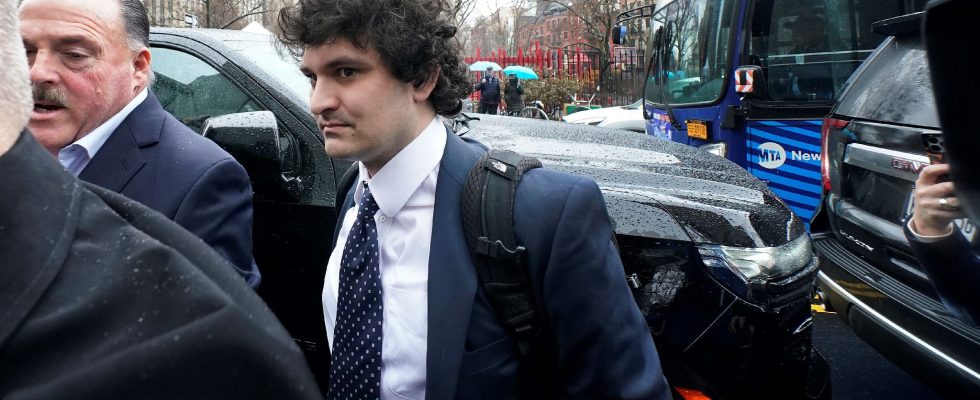Did he and his friends knowingly embezzle billions of dollars for a few luxury buildings in the Bahamas and the company of politicians and stars such as American football player Tom Brady or Bill Clinton? Or was he just an ordinary business leader with erratic management, overwhelmed by the considerable flow of money he was churning out every day to the point of committing the irreparable? The six weeks of trial which begins this Tuesday, October 3 in New York, where Sam Bankman-Fried appears for money laundering and fraud, will allow the justice system to learn more about the true motivations of the man at the head of the FTX platform, a cryptocurrency comet declared bankrupt a little less than a year ago. And thus set the quantum of the sentence which, in the worst case, could amount to more than a century behind bars.
But the “SBF” case will above all offer the jury as well as observers the portrait of a crazy and short era. FTX was born in May 2019 and died in November 2022. The majority of its short existence took place during the “magic money” era, marked by near-zero interest rates. And at a time when tech has never been so hopeful, especially during the Covid-19 crisis which brought the world to a standstill (except computers). Sam Bankman-Fried, a young man from a good family with a pale complexion, most often in flip-flops and a T-shirt, at the head of a cryptocurrency company presented rightly or wrongly as the assets of tomorrow, carrying great philosophical principles intended to change the world, checked all the boxes of the little genius that America produces once every ten years. The floodgates have opened wide.
FTX has found a way to attract players as prestigious (and usually meticulous) as Sequoia Capital, Softbank and BlackRock, to the tune of hundreds of millions of dollars. Some football stadiums have even renamed themselves with the name FTX. At the peak of its growth, the platform also received great publicity during a Superbowl, one of the most watched events in the world. In this context, the installation of SBF and its gang of traders in a tax haven to escape any kind of legal and fiscal framework, like the majority of other centralized platforms in cryptocurrencies, did not arouse suspicion. In the meantime, SBF had taken care to water all political sides, even calling on them – the height of cynicism – to remedy this situation (its former competitors Binance and Coinbase today live under very close surveillance).
Sam Bankman-Fried’s descent into hell is ultimately not so much due to the unexpected discovery of fraud, as with Bernard Madoff to whom he is often compared, as to a rather brutal change of era. Money has become scarcer, cryptocurrencies have become riskier and less attractive investments for speculators, their usefulness has even been called into question in the long term. Some projects collapsed as early as spring 2022, like TerraUSD. Like the so-called “Do Kwon” before him, the fragility of “SBF” and his gang, whose aversion to risk was spectacularly low, wasted no time in exposing itself to the world. A character is always somewhat a reflection of his time. Sam Bankman-Fried has the particularity of being perfectly inseparable from it, in his rise to power as in his fall.
